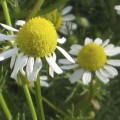Bok Choy, a Chinese cabbage, matures quickly – within a month of sowing, you can usually start harvesting leaves – but it also handles heat better than other leafy green crops. Also spelled Pak Choi.
Botanical Information
Taxonomy
- Brassica rapa chinensis
- A smaller Chinese cabbage with looser, dark green leaves
- Close relative to tatsoi, member of the Asian brassica family
History
Physical Description
wide mid-rib, form a loose head
Varieties & Cultivars
Categories or Types of Bok Choy
- Cultivars are available in different sizes
- some are more resistant to bolting
Colors Available
- white stemmed
- green stemmed
- purple-stemmed
Varieties to Grow
Growth Requirements
Climate & Temperature Requirements
Air Temperature
- cool-weather green, but can also handle heat better than many other salad and cooking greens
- will stand a light frost
Soil Temperature
- cool soil temperatures okay
- minimum soil temperature for germination: 50°F
Humidity
Day Length or Light Requirements
Site Conditions Favored
- warm, sheltered site
- light shade tolerated
- good for interplanting, since it grows quickly and doesn’t mind a little shade
Soil Requirements
Soil Texture
- moist, fertile soil
- moisture-retentive
pH
- 6.5 – 7.0
Nutrient Requirements
- likes very fertile soil
- humus rich
Propagation
Methods of propagation
Seed
- start indoors or direct sow a couple of weeks before the last-frost date
- succession sow every week for a month
- seeds sown in cool temps may bolt when the weather warms up; just keep sowing so some will grow to a mature head
- grow spring sowings as seedling crops, as early sowings run to seed quickly (bolt)
- start again in late summer for fall crop
Division
Cuttings
Transplanting or Potting Up
Seed Saving
Planting Out
Bed Prep & Soil Amendments
- dig in some well-rotted compost or manure, perhaps also some fertilizer
Bed Spacing
- 10″ BG
- Seedling crop:
- broadcast sow thinly REOG
- Leaf crop:
- 4″ GV
- 5-6″ REOG
- Medium-sized heads
- 7-9″ REOG
- Large heads:
- 12″ GV
- 18″ REOG
Row Spacing
Planting Depth
- 1/4″ BG
- 3/4″ GV
Alternative Bed Methods
- Biointensive: 6″ spacing in all directions
Container Gardening
Routine Cultivation & Maintenance
Water Requirements
- water plants frequently, since they have shallow roots GV
Fertilization Recommendations
Mulching & Weeding
- bok choy has shallow roots, so mulching will help keep it from drying out GV
- weed plants frequently GV
Pinching or Pruning & Dividing
Support
Winterizing
Companion Planting
Helpful Companions
Harmful Companions
Companion to..
Pests, Diseases & Problems
- Bolting is the most common problem with Bok choy
- Rotate where brassicas are planted to minimize bug and disease damage
- susceptible to all of the common pests and diseases that affect all brassicas
Common Pests
- susceptible to all of the common pests that affect all brassicas GV
- cabbage root fly
- flea beetle
- slugs
Common Diseases
- susceptible to all of the common diseases that affect all brassicas GV
- clubroot
Symptoms
Whole Plant
Leaves
Stem/Trunk
Flowers
Fruit
Roots
Harvesting & Storage
Edible Parts of the Plant
- whole plant, minus the roots and root base
- flowering shoots can also be eaten
Yield
1 head of bok choy comes from 1 seed
Days to Harvest / Harvest Timing
- Harvest as soon as the head feels solid, before leaves turn yellow
- in general, bok choy is ready about 6 weeks after sowing
- succession sow so that you are harvesting through July; fall-planted bok choy will be harvested through December
- seed to harvest:
- seedling crops: 2-3 weeks
- mature plants: 5-8 weeks
Harvest Methods
- pull entire plant
- cut young leaves as needed
- cut-and-come-again (young plant): cut about 1″ from the base and leave the base to grow another smaller head
Storage of harvest
Fresh
Canned
Frozen
Pickled
Dried
Cooking
Nutritional Benefits & Values
Toxicity
Cooking
Preparation
Cooking Methods
- equally tasty raw, in salads, or cooked quickly in stir-fries or braised lightly
Recipes (link to …/category/recipes/tag/BokChoy)
Resources
Information for this article was taken from these sources. (link to …/category/resources/tag/Bok Choy)


